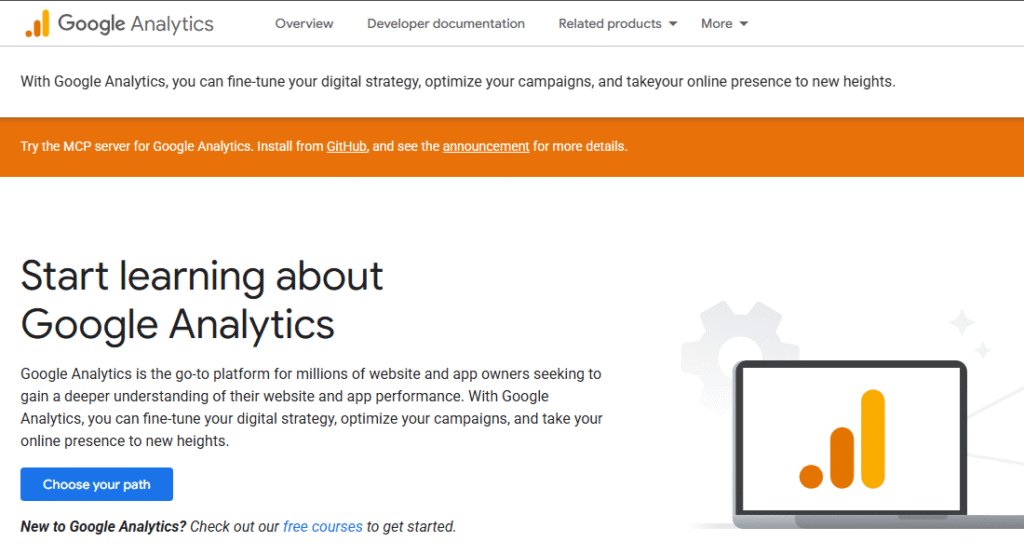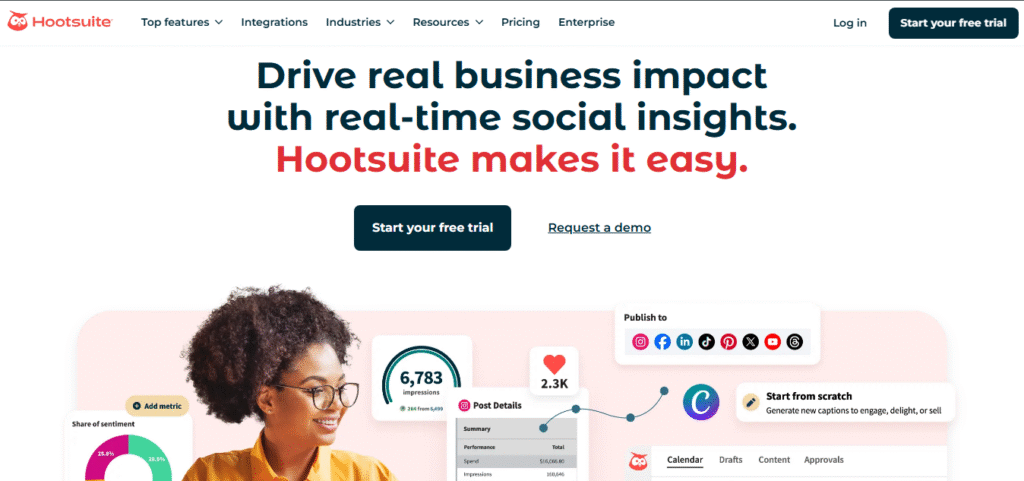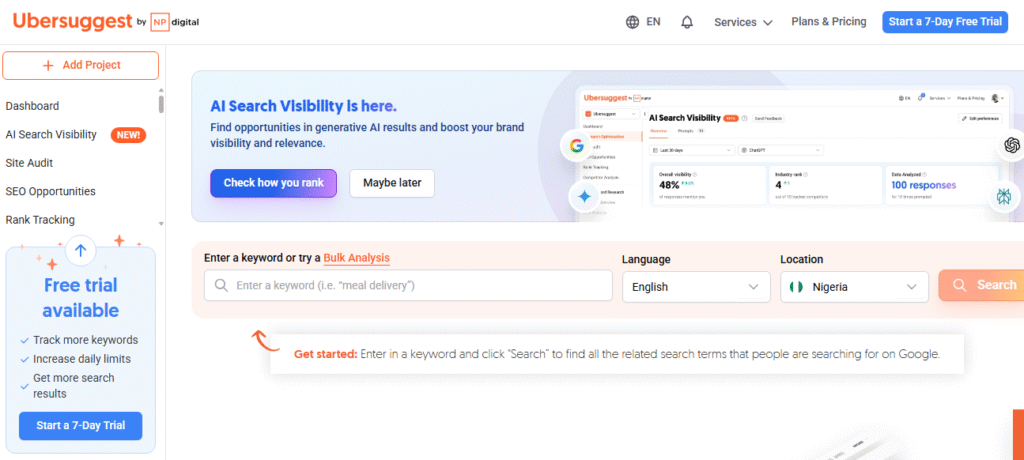When was the last time you checked how your brand is really doing?
Not your sales numbers or social media likes, your brand health.
Many Nigerian business owners measure success only by revenue, engagement, or ad results. But what if your sales are growing while your brand’s reputation is quietly fading?
That’s the tricky part about brand health: you can’t always see it in your numbers, but it affects everything from customer loyalty to long-term growth.
A strong brand isn’t just known; it’s trusted, liked, and remembered. And the only way to know if your brand is truly strong is to measure it.
In this article, I’ll walk you through how to measure your brand health as a Nigerian business owner, the key KPIs to track, what each one means, and how to use them to make smarter brand decisions.
Let’s start by breaking down what “brand health” really means.
What Is Brand Health and Why It Matters for Nigerian Brands
Ever heard someone say, “Our sales are good, so our brand must be strong”?
Not always.
Sales can show how well your products are doing right now, but brand health shows how well your brand will keep doing in the long run.
Definition of Brand Health
In simple terms, brand health is how strong your brand is in the eyes of your market.
It’s not just about how many people know your name; it’s about what they think and feel when they hear it.
A healthy brand has four key ingredients:
- Awareness: People know your brand exists.
- Perception: They have a positive view of your brand.
- Loyalty: They keep choosing you, even when options increase.
- Equity: Your name carries value that can influence buying decisions and partnerships.
Think of it like personal fitness. You might look fine today, but if you don’t check your health regularly, small issues can turn into big problems later.
It’s the same for your brand; short-term campaign success doesn’t always mean long-term brand strength.
Why Nigerian Businesses Should Care
Nigeria’s business environment is fast-paced and competitive. Consumers switch brands quickly, prices fluctuate, and regional preferences can differ widely.
If your brand isn’t healthy, you’ll constantly spend more just to stay visible. But when your brand health is strong:
- Customers find it easier to trust you.
- You spend less time convincing new customers to buy.
- Distributors and partners are more eager to work with you.
For instance, an FMCG brand with strong nationwide recognition often gets better shelf space and faster restocks than smaller brands, not necessarily because its product is better, but because retailers trust the strength of the brand name.
That’s the power of brand health: it quietly influences everything, from your marketing efficiency to how much profit you make.
Key Brand Health KPIs Nigerian Businesses Should Track
To truly understand your brand’s strength, you need more than gut feeling; you need numbers.
These Key Performance Indicators (KPIs) give you a clear picture of how your brand is performing in the market, how customers feel about you, and how strong your reputation is online and offline.
Let’s break them down one by one.
Brand Awareness Metrics
This tells you how many people know your brand exists and how often they see or remember it.
It’s your starting point; if people don’t know your brand, they can’t buy from you.
- Reach or Impressions: How many people see your ads or campaigns (online, radio, TV, billboards).
- Brand Recall: What percentage of people can remember your brand when asked?
- Share of Voice: How often your brand appears in conversations or media compared to your competitors.
Example:
A Lagos-based cleaning service ran a billboard campaign and followed it up with a short online survey. The results showed a 35% increase in people who could recall their brand name within two weeks. That’s measurable brand awareness.
Brand Perception Metrics
This measures how people feel about your brand, your reputation, image, and emotional connection with customers.
- Brand Favourability: What percentage of your audience has a positive impression of your brand?
- Brand Associations: What comes to mind when people hear your name? (e.g., “reliable,” “affordable,” “premium”)
- Net Promoter Score (NPS): How likely are customers to recommend your brand to others?
Example:
A Nigerian telecom company noticed a drop in favourability after increasing data prices. Using perception tracking, they discovered price was hurting their image, and used that insight to adjust their marketing tone and improve retention.
Brand Usage & Loyalty Metrics
This tells you how often customers return, a true test of brand health.
- Repeat Purchase Rate: Percentage of customers who buy from you again.
- Customer Retention Rate: How well you keep existing customers over time.
- Subscription or Membership Growth: Perfect for fintechs, SaaS, or loyalty-driven brands.
Example:
A Nigerian e-commerce startup tracked how many customers reordered in 60 days. When the rate increased by 15% after introducing a loyalty discount, they knew their brand loyalty was improving.
Brand Equity & Value Metrics
This shows the real worth of your brand, how much people value it beyond your actual products or services.
- Brand Premium: Are customers willing to pay more for your brand compared to others?
- Brand Valuation: How much your brand contributes to your company’s financial value.
- Digital Brand Equity: Measured through backlinks, online mentions, and SEO authority.
Example:
A Nigerian bank monitored the number of reputable websites mentioning them and linking to their pages. The result was a 25% improvement in Google ranking, showing stronger digital brand equity.
Digital Brand Health Metrics
Today, your online presence says a lot about your overall brand health. These digital indicators show how strong your brand is across search and social media.
- Social Media Engagement: Likes, comments, shares, and saves, not just followers.
- Brand Mentions & Sentiment: How often people talk about your brand, and whether it’s positive or negative.
- Search Volume for Brand Name: How many people are actively searching for your brand on Google (Nigeria-specific data).
- Direct Website Traffic: Visits that come from people typing your brand name directly, a sign of strong brand recall.
Example:
A Nigerian fashion label noticed a steady increase in direct website traffic even after pausing ads, a clear sign that brand awareness and loyalty were growing organically.
How to Measure These Brand Health KPIs in Nigeria
Knowing which KPIs to track is one thing.
But how exactly do you measure them, especially in Nigeria, where data tools and research budgets can be limited?
The good news is that you don’t need an expensive analytics team to start. With the right mix of surveys, digital tools, and local benchmarks, you can build a clear picture of your brand’s health.
Let’s look at practical ways to do it.
Surveys and Research Methods
Sometimes, the most powerful insights come directly from your customers.
Surveys and interviews help you understand how people perceive your brand, what they think, feel, and remember about you.
Here’s how to do it affordably in Nigeria:
- Online Surveys: Use free or low-cost tools like Google Forms, Typeform, or SurveyMonkey to ask questions about awareness, loyalty, or satisfaction. Share them via WhatsApp groups, email lists, or social media.
- Phone or Face-to-Face Interviews: If you target audiences that aren’t always online, short phone interviews or market intercepts in Lagos, Abuja, or Port Harcourt can give real-world insights.
- Market Research Agencies: For more structured data, partner with local research firms like NOI Polls, SBM Intelligence, or independent survey consultants who understand Nigerian consumer behaviour.
Example:
A mid-sized food brand in Lagos used Google Forms to ask customers how they had discovered the brand’s new product. Within two weeks, they identified that 40% came from word of mouth rather than ads, a useful insight for planning future campaigns.
Digital Tools & Analytics
Digital platforms make it easier than ever to measure brand health data in real time.
Here are some tools you can start using, even on a small budget:
- Google Analytics (GA4): Track how many users visit your site by typing your brand name directly; that’s a strong signal of brand awareness and loyalty.

- Social Listening Tools: Tools like Brand24, Talkwalker, or Hootsuite Insights can help you monitor brand mentions, hashtags, and sentiment across Nigerian social media.

- SEO Tools: Platforms like Ahrefs, Moz, or Ubersuggest show your backlink profile and how often your brand name is searched on Google. These help you measure digital brand equity.

Example:
A small fintech startup used GA4 to compare direct visits (from people typing the site URL) versus referral visits (from ads and campaigns). When direct visits grew by 20%, they knew more people were actively seeking their brand, not just clicking on ads.
Localised Benchmarks & Comparisons
To make your data meaningful, you need a baseline, something to compare new results against.
Here’s how Nigerian businesses can set realistic benchmarks:
- Establish a Starting Point: Record current figures (like awareness rate, repeat purchase rate, or engagement level) before launching campaigns.
- Compare Against Industry Averages: When possible, gather data from competitors, trade associations, or industry reports to understand where your brand stands.
- Use Internal Benchmarks: Even if you lack external data, compare your current quarter’s results against the previous one; steady growth signals improving brand health.
Example:
A Nigerian beverage company measured its repeat purchase rate before a national TV feature, then compared it afterward. Within a month, repeat purchases jumped 12%, confirming that the media exposure directly strengthened brand loyalty.
By combining surveys, digital tools, and local benchmarks, Nigerian businesses can monitor brand health accurately, without overspending.
Once you’ve gathered your data, the next step is knowing how to interpret it and how to use those insights to strengthen your brand over time.
Interpreting Brand Health Results & Acting on Them
So, you’ve collected the data, surveys, analytics, social mentions, repeat purchase rates, but what do these numbers actually mean for your brand?
Understanding the results is where the real value lies.
Brand health metrics are not just numbers; they’re signals. They tell you what’s working, what’s not, and where to focus next.
Here’s how to interpret your results and use them to take smarter action.
Diagnosing Brand Weaknesses
Think of your brand health report like a medical checkup.
Each metric, awareness, perception, loyalty, and equity, gives clues about different “organs” of your brand.
Here’s how to read the signs:
- Low Awareness but High Favourability: People who know your brand like it, but not enough people have heard of it.
Focus on visibility campaigns, paid ads, PR features, influencer partnerships, and community presence.
You don’t have a product problem; you have an exposure problem.
- High Awareness but Low Recommendation (or NPS): People know you exist, but don’t love you enough to recommend your brand.
This means you need to work on brand experience, better customer service, improved product quality, or stronger after-sales relationships.
- High Loyalty but Weak Equity: You may have repeat customers, but no strong brand recognition or authority.
Invest in storytelling, partnerships, or national media features that elevate your image.
Example:
A service company in Lagos realised that while many Nigerians knew its name (brand awareness), only a small percentage actively used its services or recommended it.
After analysing its loyalty metrics, the company launched a customer appreciation campaign and improved response time, and within three months, its Net Promoter Score rose significantly.
Setting Improvement Goals
Once you know your strengths and weaknesses, the next step is to create specific goals for improvement.
Vague goals like “we want better brand awareness” won’t cut it; you need measurable targets.
Here’s how to do it:
- Set SMART Goals: Specific, Measurable, Achievable, Relevant, and Time-bound.
Example: “Increase Net Promoter Score (NPS) from 30 to 45 within 12 months.”
- Link Brand Health to Business Objectives: Your brand metrics should connect directly to your business goals, helping you attract new customers, keep existing ones, and boost overall profit.
Example: If you plan to expand nationally, set a goal to raise awareness in 3 new states before launching.
- Review Regularly: Treat brand health like a living system. Check results quarterly or biannually, not just once a year.
Example: A Nigerian fashion e-commerce brand tracked repeat purchase rate monthly and set a SMART goal to grow it by 15% in six months. They introduced loyalty discounts and improved packaging, and by the fifth month, they had already hit their target.
Integrating Brand Health into Marketing Strategy
Measuring is one thing, acting on insights is what makes the difference.
Your brand health data should shape your marketing strategy, not sit in a report.
Here’s how to make that connection:
- Use Insights to Guide Campaigns: If awareness is low, prioritise campaigns that put your name in front of new audiences, PR, influencer marketing, or sponsored content.
If loyalty is low, shift focus to retention campaigns and customer engagement.
- Tailor Your Messaging: Your perception data shows how people see you. If consumers view your brand as “cheap” but you want to be seen as “affordable quality,” tweak your content, tone, and visuals accordingly.
- Allocate Budget Based on Insights: Don’t just spend equally across all channels. Spend more where the data shows gaps.
Example:
A Nigerian SME realised from its brand tracking report that awareness was high, but loyalty was dropping. Instead of pouring more money into ads, it redirected part of its marketing budget toward retention and CRM tools, resulting in stronger repeat purchases and more word-of-mouth referrals.
When you learn to interpret your brand health results, you stop guessing and start leading.
Every campaign, post, or ad becomes a strategic move, backed by real insight into how Nigerians see and trust your brand.
Mistakes Nigerian Brands Make When Measuring Brand Health
Many Nigerian businesses want to understand how strong their brand is, but they often measure it the wrong way.
Here are a few common mistakes to avoid:
Focusing only on sales and ignoring brand metrics
Sales show short-term performance, not long-term brand strength. Your sales may look good now, but without healthy brand perception and loyalty, they can drop anytime.
Relying only on digital data
Tools like Google Analytics and social listening are great, but they don’t capture how people perceive your brand offline, in shops, markets, or on billboards.
A complete picture requires both online and offline insights.
Comparing with global benchmarks
Nigerian consumers behave differently. What works for a global tech brand might not apply to a local service provider. Always compare with local or regional data first.
Tracking too many metrics at once
More data doesn’t always mean better insight. It’s better to focus on 5–7 key KPIs you can understand and act on, rather than drowning in dashboards.
Example:
A Lagos-based startup once tracked over 50 data points every month, including website clicks, social mentions, ad impressions, and more. But no one could tell what was actually improving.
When they narrowed it down to just brand recall, NPS, and repeat purchase rate, their marketing became clearer and more effective.
Building a Sustainable Brand Health Monitoring System
Once you start measuring, the next step is consistency.
A one-time report won’t help your brand grow; you need a system that keeps track of changes over time.
Here’s how to build one:
Set a review routine
Hold monthly or quarterly brand health check-ins. Use this time to compare metrics, identify trends, and discuss what’s improving or declining.
Assign responsibility
Designate a marketing team member, or work with an agency like Oxgital, to own your brand monitoring process. Clear ownership ensures consistency.
Create a simple dashboard
Use Google Data Studio, Excel, or any visual dashboard to track your KPIs. Make it easy to interpret at a glance.
Use the data for real decisions
Don’t just collect reports, act on them. Let your brand health data guide product improvements, ad strategies, and customer experience updates.
Example:
A Nigerian FMCG brand started reviewing its brand health quarterly after every national campaign.
By comparing awareness, recall, and purchase intent, they discovered northern Nigeria responded more positively than Lagos.
That insight shaped their next ad placement, and sales grew 18%.
Conclusion
Measuring your brand’s health isn’t optional; it’s essential.
It tells you if people know your brand, like it, and stay loyal to it.
By tracking awareness, perception, loyalty, and equity, you gain the insights needed to build a stronger and more trusted brand.
Don’t wait for sales to drop before you take action.
Start measuring now, refine your strategy, and let your brand grow stronger every quarter.
